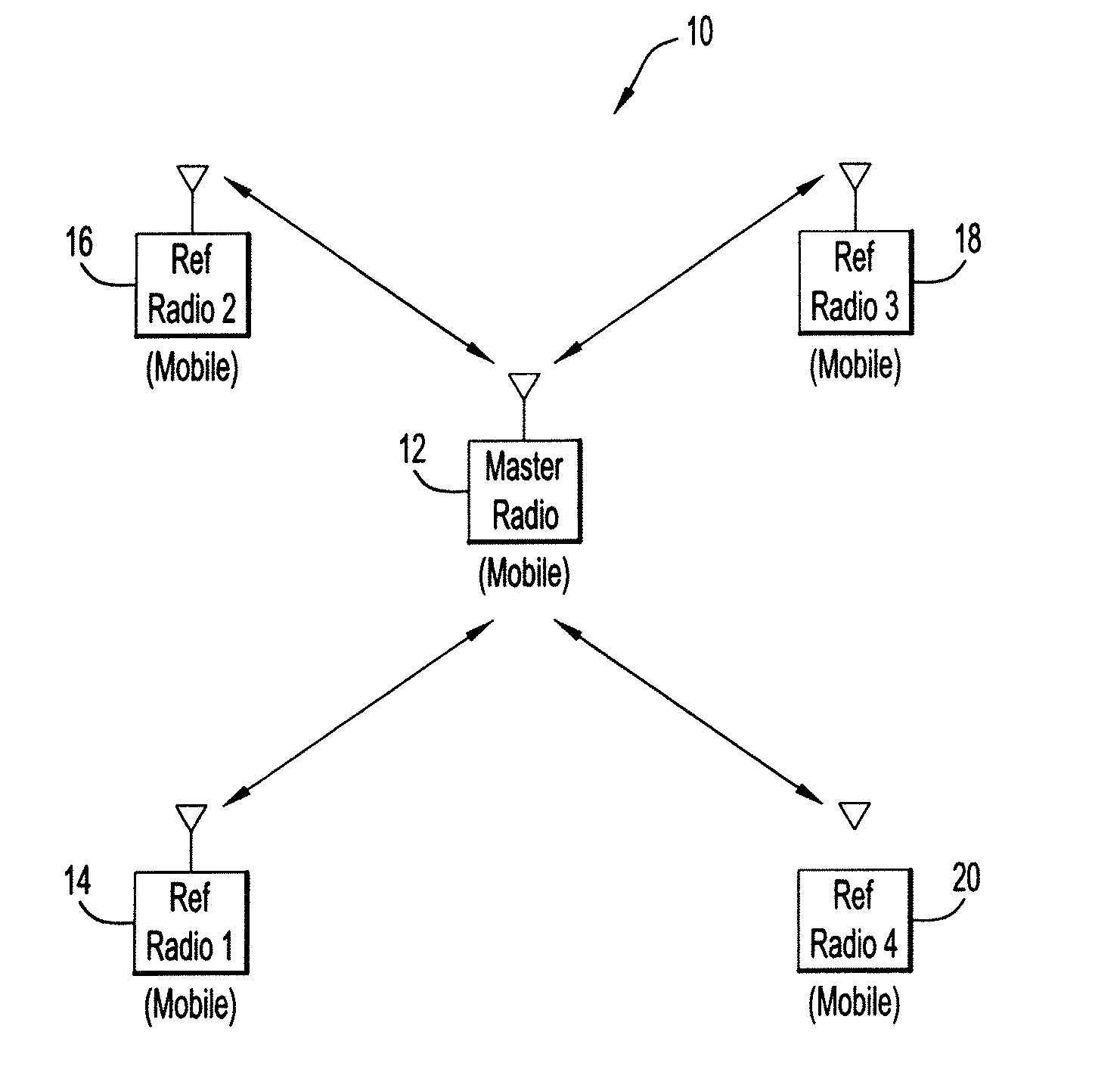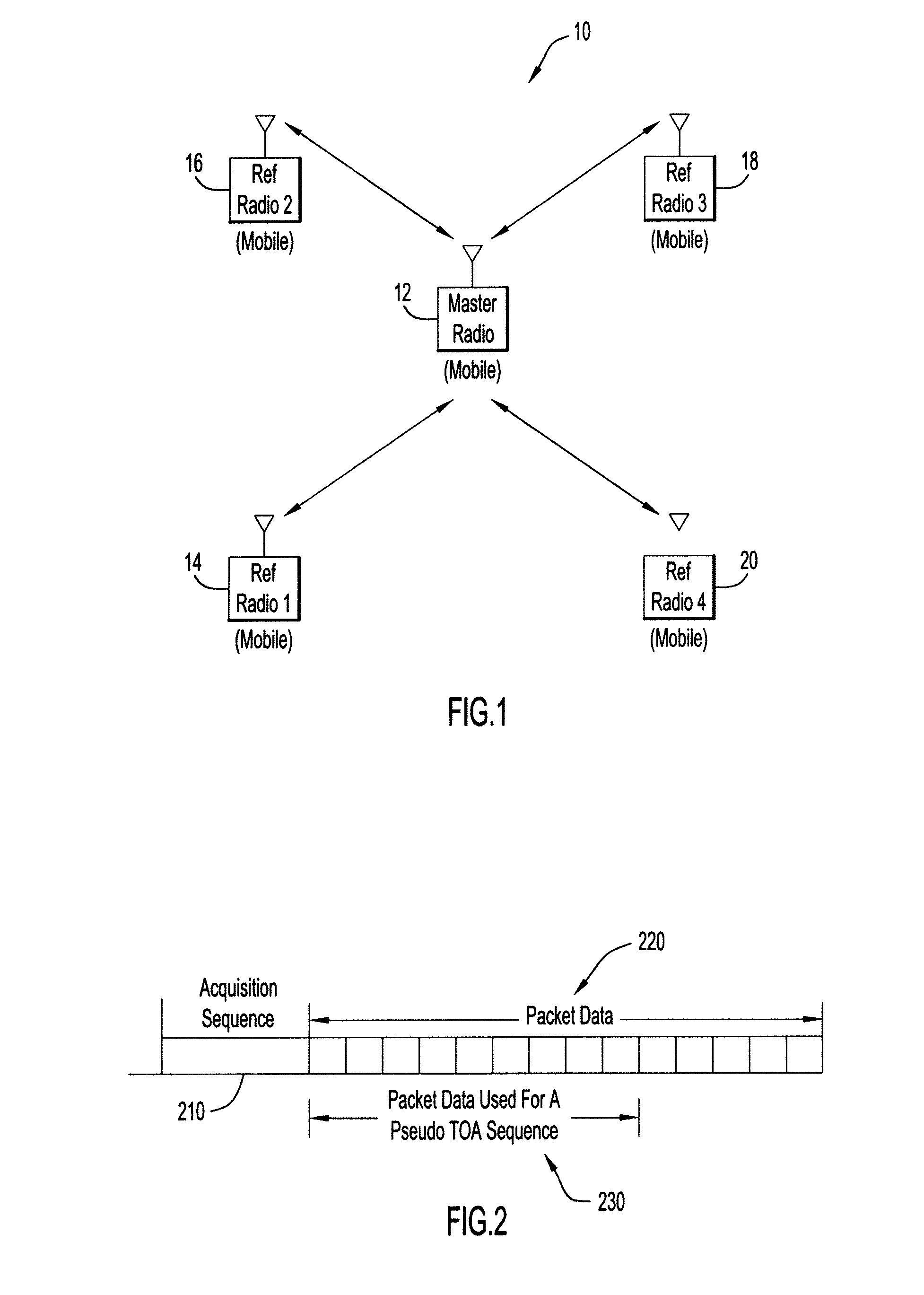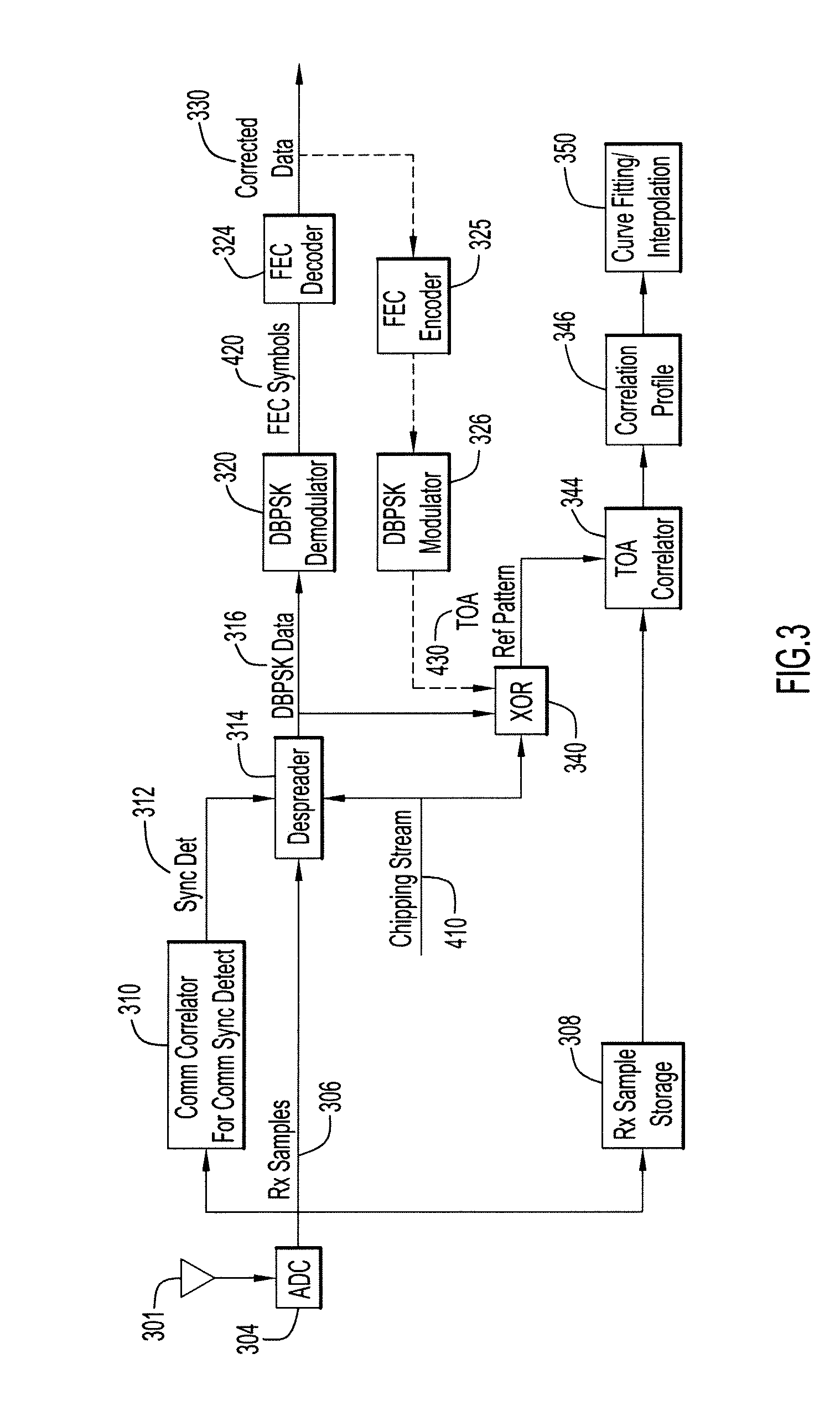Ranging Between Radios Using Pseudo Time of Arrival Sequence
a radio and pseudo-time of arrival technology, applied in the field of ranging, can solve the problems of difficult to know their precise location, inability to accurately determine the toa of the given received sample, and inability to use gps signals. the effect of improving radio ranging and accurately determining the toa of the given sampl
- Summary
- Abstract
- Description
- Claims
- Application Information
AI Technical Summary
Benefits of technology
Problems solved by technology
Method used
Image
Examples
Embodiment Construction
[0020]Referring to FIG. 1, a position location system 10 includes a target or “master” mobile communication device or radio 12 communicating with four reference communication devices 14, 16, 18 and 20. As used herein, a mobile communication device or mobile radio is any portable device capable of transmitting and / or receiving communication signals, including but not limited to: a handheld or body-mounted radio; any type of mobile telephone (e.g., analog cellular, digital cellular or satellite-based); a pager or beeper device; a radio carried on, built into or embedded in a ground-based or airborne vehicle; or any portable electronic device equipped with wireless transmission and reception capabilities.
[0021]Each of reference radios 14, 16, 18 and 20 can be any radio located at a known position that is capable of communicating with the master radio 12 in the manner described herein to convey position and range-related information. For example, one or more of the reference radios can ...
PUM
 Login to View More
Login to View More Abstract
Description
Claims
Application Information
 Login to View More
Login to View More - R&D
- Intellectual Property
- Life Sciences
- Materials
- Tech Scout
- Unparalleled Data Quality
- Higher Quality Content
- 60% Fewer Hallucinations
Browse by: Latest US Patents, China's latest patents, Technical Efficacy Thesaurus, Application Domain, Technology Topic, Popular Technical Reports.
© 2025 PatSnap. All rights reserved.Legal|Privacy policy|Modern Slavery Act Transparency Statement|Sitemap|About US| Contact US: help@patsnap.com



